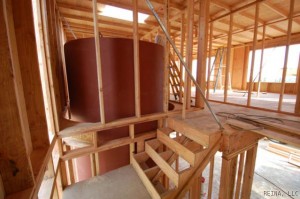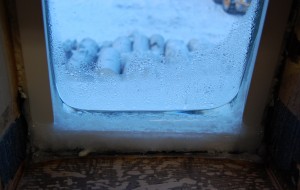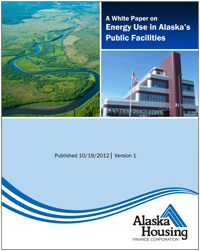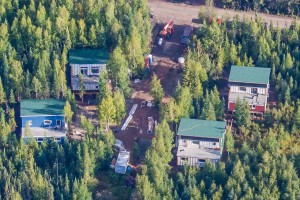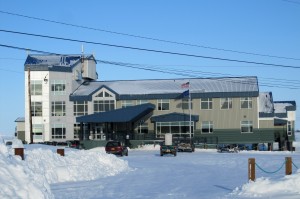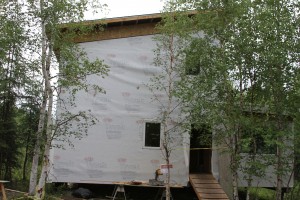
House wraps must stop bulk water from entering on the cold side and also be permeable enough to allow water vapor to pass through from the warm side.
The building envelope is defined as those parts of a house that keep the indoor and outdoor environments separate. The building envelope includes the exterior walls, roof, windows, doors and the foundation and/or ground floor.
As elements of the building envelope, vapor barriers and house wraps are a critical part of controlling moisture and air flow through your home.
If selected and installed properly, these products can help you conserve energy, prevent mold growth and maintain the structural integrity of your home. On the flip side, not using these products or using one incorrectly can have the opposite effect.
Vapor barriers on the warm side
A vapor barrier, also known as a vapor retarder, is a layer of material designed to slow or nearly block the movement of water vapor by diffusion. How much a vapor retarder impedes the movement of water vapor is referred to as its permeability rating, or “perm” rating. Six-mil-thick (0.006 inch) plastic sheeting is a typical vapor retarder material prescribed by residential building codes in cold climates, as its perm rating is extremely low.
In standard cold climate frame construction, the plastic vapor retarder is located on the warm-in-winter side of the wall — typically it is applied over the studs directly behind the drywall.
All homes contain moisture inside — cooking, bathing, breathing all create water vapor. In winter time the challenge then becomes keeping this water vapor from reaching places in the building envelope where it can condense.
Ventilation, which is essential to exchange moisture-laden air with clean, dry air, helps reduce the quantity of moisture in a tight home, but not enough to eliminate the need for a vapor retarder.
Where it gets interesting is that 98 percent of water vapor in a home travels by air leakage, while only the remainder moves by diffusion — through solid materials such as the drywall and sheathing in your walls. So, with proper sealing around penetrations and by sealing overlapping layers, we can also rely on the plastic vapor retarder to serve as an air barrier.
House wraps on the cold side
House wraps, on the other hand, are primarily designed to cope with the elements on the outside. They must be permeable enough to allow water vapor to pass through them from the warm side, but still stop bulk water like rain from entering on the cold side — similar to a Gore-Tex jacket.
By nature, house wraps must be vapor permeable enough to allow for drying if moisture finds its way into the wall cavity from either the inside or the outside. In addition, house wraps can help minimize the movement of air in and out of the exterior walls. Air movement through the building envelope in an uncontrolled manner, means you’re losing heat, which can become a burden on your budget.
To effectively repel water and reduce airflow, house wraps must be detailed correctly and applied using the manufacturer’s recommended methods and adhesives. All the penetrations into your walls from the exterior, such as vents, electrical connections, and architectural features, must be carefully accounted for.
The right types of house wraps can perform an important job in windy places by stemming significant heat loss and keeping the framing protected from precipitation that gets past the siding.
Final thoughts
The placement and permeability of vapor barriers and house wraps are addressed by building codes, but vary by region. Vapor barriers are required on the warm-in-winter side of the exterior walls in Fairbanks.
This article only touches on the details required to choose and install vapor barriers and house wraps. Placement and water vapor permeability can be a fairly complicated issue because of the wide variety of products on the market today.
You can find resources at CCHRC, the University of Alaska Fairbanks Cooperative Extension Service, and your local building department to help you make the right decisions. Doing your research up front will help maximize home performance and prevent problems later.
